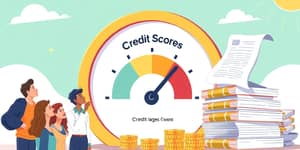
In a world where credit card debt surpassed $1.18 trillion in early 2025, many families find themselves trapped in a cycle of high fees and mounting balances. Balancing multiple due dates, rising APRs, and ever-growing minimum payments can feel overwhelming. Fortunately, personal loans offer a strategic solution to unify scattered debts into a single, manageable payment, often at a lower interest rate and with a predefined payoff schedule for lasting relief.
Credit card balances have soared to staggering heights, creating financial strain for millions. As of June 2025, the average APR on credit cards hovers around 20.12%, leaving many borrowers paying substantial finance charges each month. With only minimum payments often made, balances can grow exponentially, trapping households in long repayment timelines and relentless interest accumulation.
The compounding nature of credit card interest means unpaid portions continue growing, making the ultimate payoff date feel perpetually distant. For those juggling several cards, each with its own rate and due date, the administrative burden adds stress and confusion rather than clarity. Recognizing the scale—$1.182 trillion in credit card debt—is the first step toward seeking a streamlined, sustainable alternative.
Against this backdrop, personal loans have surged in popularity as a debt-consolidation tool. In Q1 2025, 24.6 million Americans held personal loans, up from 23.5 million the previous year. Collectively, outstanding personal loan debt reached $253 billion, marking a 3.3% year-over-year increase. These figures underscore a clear shift: nearly half of borrowers now use funds to refinance high-interest credit cards or combine existing debts.
Borrowers often turn to lenders offering transparent rates and fixed payment schedules, seeking relief from variable card APRs and unpredictable billing. With predetermined terms—commonly ranging from one to seven years—personal loans enable borrowers to project a precise payoff date, reducing uncertainty and providing a clear path to financial freedom.
One of the most compelling reasons to consider consolidation is the potential interest savings. While credit cards often carry APRs in excess of 20%, personal loans average just 12.65% as of mid-2025. For consumers with strong credit histories, rates can dip even lower, sometimes below 8%, directly translating into lower overall finance charges.
With a fixed repayment schedule with clear dates, borrowers can avoid the unpredictable rate fluctuations of credit cards. By switching high-rate balances into a single loan, each monthly payment works more powerfully toward principal reduction rather than servicing exorbitant interest fees.
Begin by tallying all outstanding balances, including credit cards, medical bills, and other unsecured obligations. Next, shop around to compare APRs, terms, and fees from multiple lenders—banks, credit unions, and online platforms alike. Check your credit report and score in advance; borrowers with scores above 680 typically qualify for the best rates.
When ready to apply, gather income statements, identity documents, and details of debts to be paid. Carefully review origination fee disclosures and confirm whether the lender pays creditors directly or deposits funds into your account. After disbursement, decide whether to close or manage old accounts wisely to preserve credit utilization metrics.
Consolidation is a powerful tool, but lasting relief requires disciplined habits. Create and maintain a monthly budget, track spending trends, and avoid accumulating new credit card balances. Set up automatic payments to ensure on-time repayment and consider using a debt repayment calculator to calculate potential total interest savings over your loan’s life.
Engage in small financial goals—like building a three-month emergency fund—to prevent future reliance on high-interest credit. Regularly review your credit reports for accuracy and celebrate milestones as balances shrink and your payoff date approaches.
High-interest credit card debt can feel like an insurmountable burden, but personal loans offer a viable path to freedom. By consolidating multiple debts into one manageable monthly installment and locking in a lower APR, you can regain control of your finances and accelerate your journey to debt-free living. Take the first step today—explore your options, plan strategically, and take control of your financial future.
References













